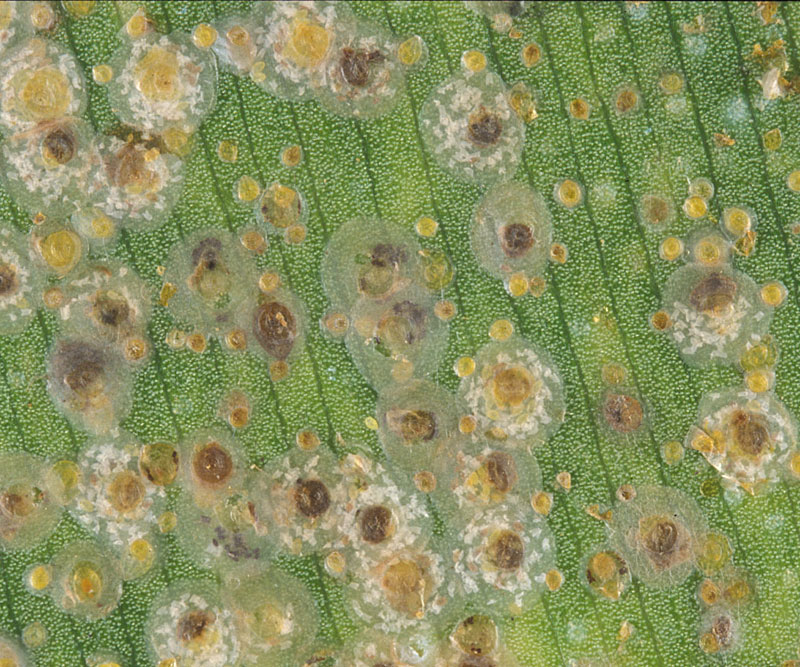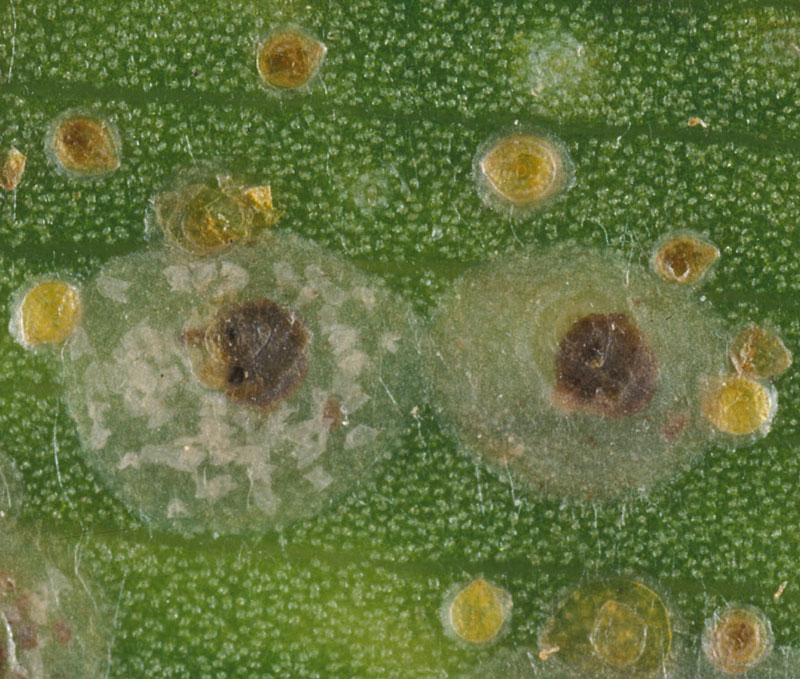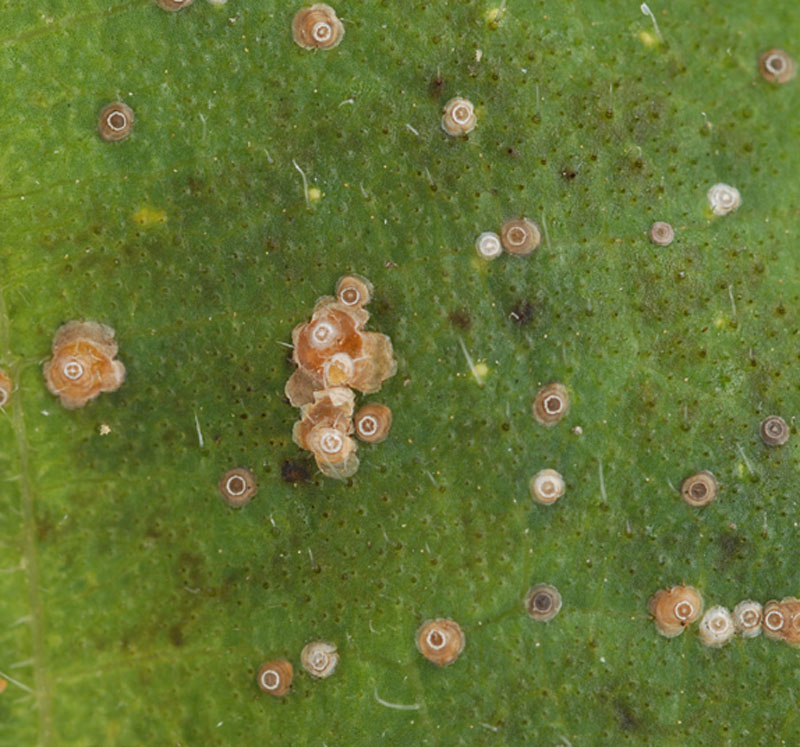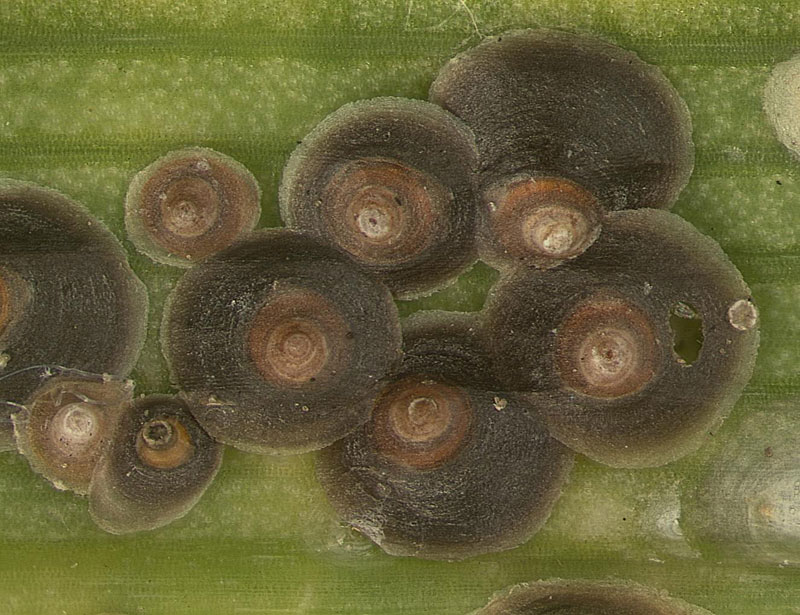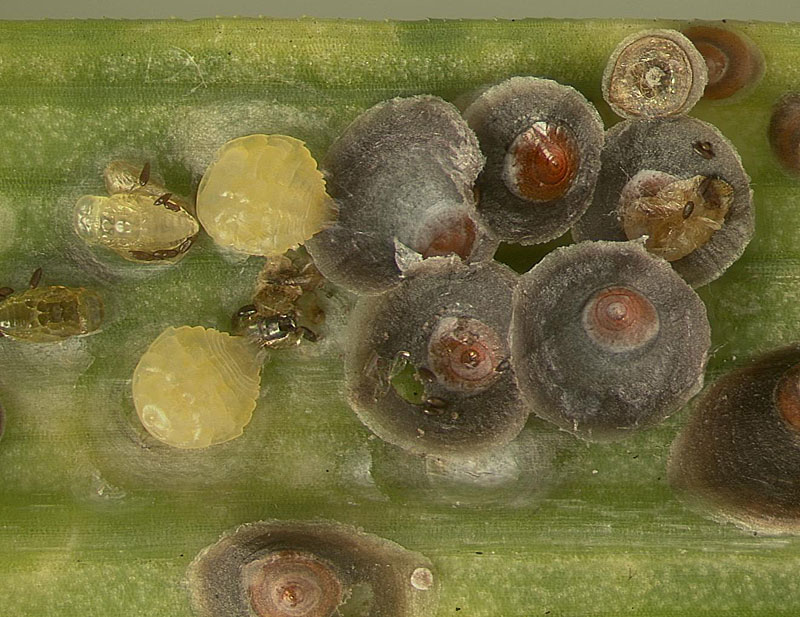Armored Scales
|
coconut scale, Aspidiotus destructor, adult females and nymphs; Photo by Lyle Buss, University of Florida |
|
coconut scale, Aspidiotus destructor, adult females and nymphs; Photo by Lyle Buss, University of Florida |
|
black thread scale, Ischnaspis longirostris, adult females; Photo by Lyle Buss, University of Florida |
|
California red scale, Aonidiella aurantii adult females; Photo by Lyle Buss, University of Florida |
|
Florida red scale, Chryosomphalus aonidum, adult females; Photo by Lyle Buss, University of Florida |
|
Florida red scale, Chryosomphalus aonidum, adult females with scale covers flipped over; Photo by Lyle Buss, University of Florida |
Rank & taxon
Family Diaspididae
Description
Mature females can be 1-3.5 mm in length, but most are 1.5-2 mm long. Adult females secrete a waxy coating that functions like a suit of armor; it may be circular to pyriform to elongate in shape, reflecting the form of the insect inside. They may be white, yellow, purple, red, or orange in color. The protective coating is not a part of the body and can be removed. All stages of armored scale insects are legless with the exception of the first-instar crawlers and the third, fourth, and adult male. The crawlers are very small, oval and flattened in form, with very short but functional legs.
Distribution
Worldwide; 400 genera, representing over 2,650 described species
Biology/life cycle
Life cycles vary among species. Females may lay eggs or give birth to live young under the scale cover. The first instarinstar:
stage in an insect's life history between any two molts. The newly hatched insect is the first instar, and the adult (imago) is the final instar.
, or crawler stage, emerges from the cover through a small posterior opening and may disperse either passively by wind or actively by walking. Females have 3 instars while males have 5 instars which include two "pupal" instars. The female scale cover is formed through the incorporation of the first- and second-instar skins as they are shed, while males only incorporate the shed exuviae of the crawler stage. The family encompasses a variety of life histories; there may be 1 to 6 generations per year, and overwintering may occur in any instarinstar:
stage in an insect's life history between any two molts. The newly hatched insect is the first instar, and the adult (imago) is the final instar.
except the third, fourth, or adult male.
Hosts
Palms: a wide variety of palms
Other: a wide variety of species, but generally found on long lived species such as trees and shrubs.
Representative taxa on palms
Aspidiotus destructor, the coconut scale insect, is a flat, circular, transparent scale commonly found on coconut palms but also occurs frequently on other palm species.
Ischnaspis longistoris, the black-thread scale insect, has a distinctive body form in the female, with a shiny, black, and extremely long and narrow scale cover. This species is one of the most frequently encountered armored scales on a variety of decorative palms, and it thrives under greenhouse conditions.
Additional comments
Armored scales do not secrete honeydewhoneydew:
the sticky, sweet secretion produced by sap-feeding bugs
, but are still occasionally associated with ants. They may be found on nearly any part of the plant, though they are rarely found on roots. Armored scales are one of the most commonly encountered insect pests on cultivated palms. The scale covers often persist on the plant long after the insect itself has expired. Definitive species identification in armored scales is usually based on microscopic characters from a slide-mounted adult female, and should be done by an expert.


